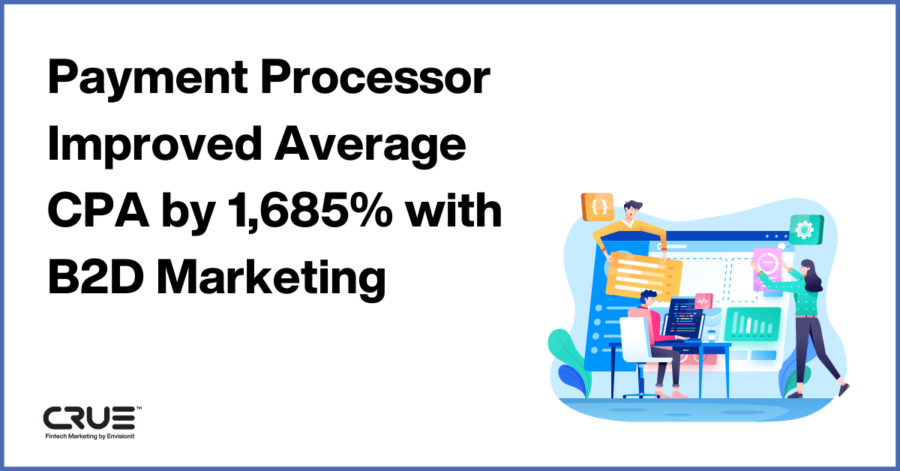Personalization: more than a trend
The dictionary defines personalization as having something marked with one’s name or initials, or to have something customized to meet an individual’s needs or preferences. To marketers, though, personalization doesn’t need to be confined to a name, nor to an individual. It can cover a limitless variety of demographics, psychographics, and behaviors. Or it can be applied to a wide range of companies, cohorts, and organizations.
Personalization of marketing efforts has been one of the top marketing trends of the 2010s, and it’s here to stay. The reason is simple:
Personalization allows marketers to connect their customer personas to each touchpoint in the journey, to reach the right audiences with the right messaging at the right times.
The value of personalization is that it increases overall business profitability while reducing customer churn. A 2016 study performed by Gartner hypothesizes that by 2020, smart personalization engines that recognize customer intent will enable digital businesses to increase their profits by up to 15%.
Overcoming barriers to personalization
While many companies, both B2B and B2C, have been adapting personalization strategies, many others have been reluctant, or haven’t expanded them beyond simple segmentation.
Hesitation typically comes down to two reasons: cost or resourcing. The good news is that, although cost and resourcing may be factors, businesses can also achieve personalization on a shoestring budget and with minimal resources.
Personalization lifts sales
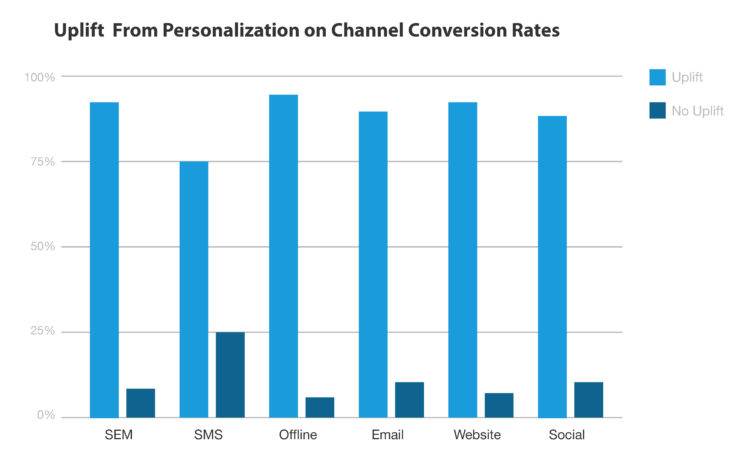 [Source: Econsultancy, Conversion Rate Optimization Report, September 2014]
[Source: Econsultancy, Conversion Rate Optimization Report, September 2014]
For example, marketers see an average increase of 20% in sales when using personalized web experiences across multiple channels. The importance and impact are applicable to both B2B and B2C organizations.
B2B
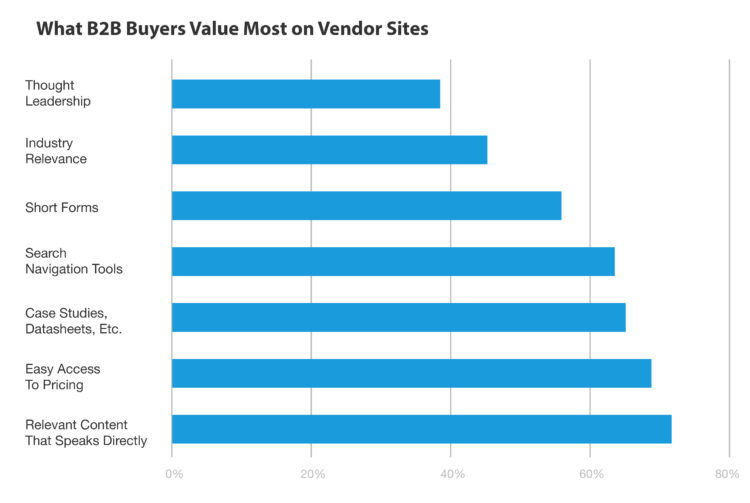 [Source: DemandGen Report, B2B Buyer’s Survey, 2016]
[Source: DemandGen Report, B2B Buyer’s Survey, 2016]
Personalization is the most important factor – even more than pricing information.
B2C
In 2013 Infosys’s Rethinking Retail study found that personalization is important to consumers, too:
- 74% feel frustrated when content is not personalized
- 59% say personalization influences their buying decisions
- 31% would like their shopping experiences to be more personalized
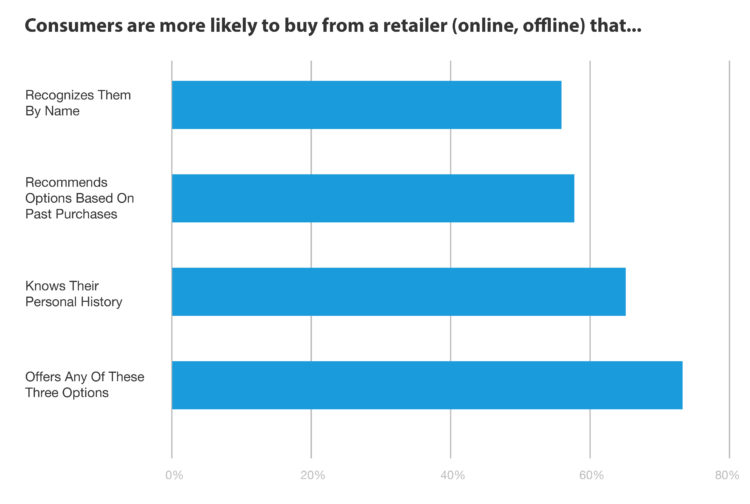 [Source: Accenture]
[Source: Accenture]
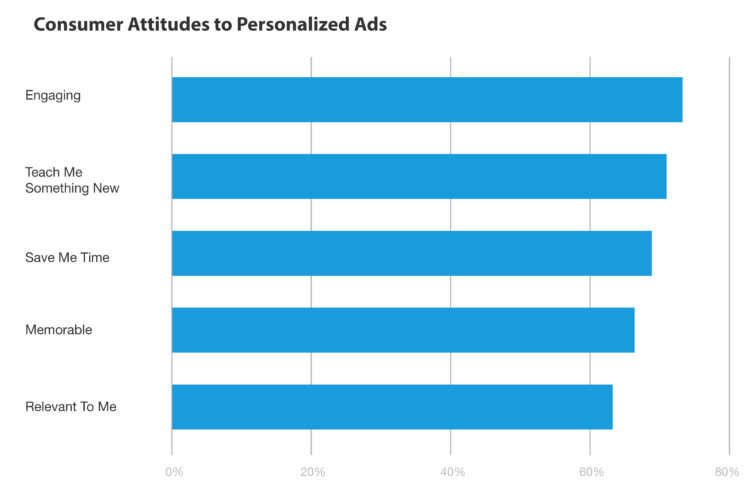 [Source: Yahoo, Consumers Say They Find Personalized Ads More Engaging and Memorable, June 2014]
[Source: Yahoo, Consumers Say They Find Personalized Ads More Engaging and Memorable, June 2014]
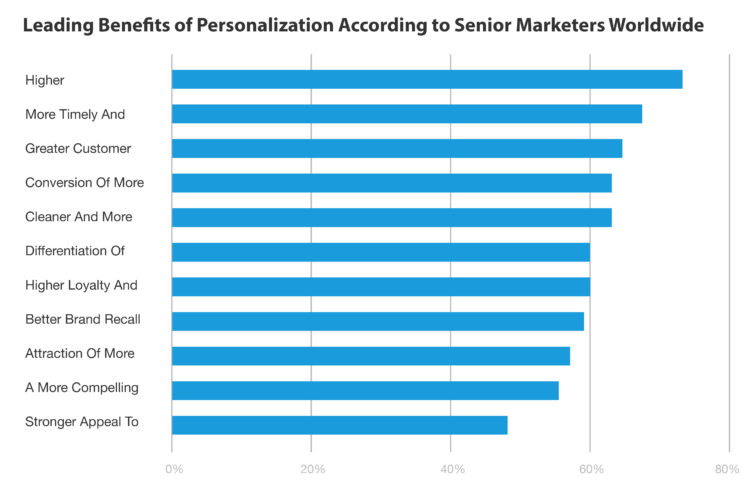 [Source: CMO Council, Brand Attraction from Enriched Interaction, August 2015]
[Source: CMO Council, Brand Attraction from Enriched Interaction, August 2015]
Ancillary benefits to marketers include:
- Stronger appeal to millennials
- Improved brand awareness, recognition and recall
- Differentiation from competitors
- Increased customer loyalty and retention
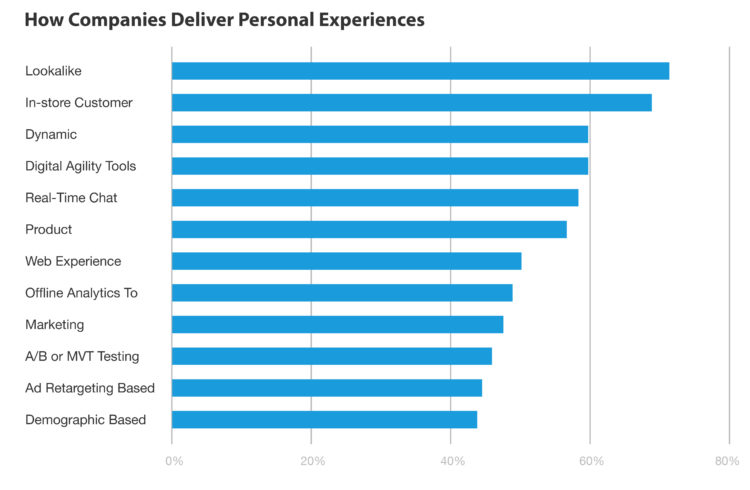 [Source: Statista, Personalization of Marketing Using Data, November 2016]
[Source: Statista, Personalization of Marketing Using Data, November 2016]
There can be many touchpoints along the way, but the customer journey can be thought of as comprising three broad stages:
- Before the prospect has heard much about your brand
- While they are learning more about your brand and, ultimately, making an initial purchase decision
- When they become an active and returning customer
Personalization and Digital Campaigns
Digital advertising is the most common and cost-effective application of personalization, even with minimal budget or resources. Some digital advertising platforms also provide free tools – such as Facebook’s Audience Insights – for analyzing your audiences to see which targeting options would best reach them. Here are some common categories:
Demographic and psychographic ad targeting
Advanced ad platforms offer, at a bare minimum, some form of basic demographic targeting, such as geographic location, age or gender. Social ad platforms offer even more granular psychographic targeting options – interest targeting, for instance.
With such possibilities in play, the ability to tailor creative messaging presents real opportunities for brands looking to personalize and test messaging throughout a campaign’s life cycle, and gain powerful insight into what works and what doesn’t.
Lookalike Targeting
Increasingly effective on platforms such as Facebook, lookalike targeting works by identifying people who are a close match to your current best customers, and serving them ads with appropriate content. Marketers often find hidden gems among the “new” audiences, which deliver immediate and lasting results.
Retargeting or Remarketing
Your visitors provide marketers with invaluable information. When they visit your website, they have not only expressed interest, but they have given you insight into the problem(s) they want to solve. Through many common ad platforms, brands can create messaging tailored to prospective customers simply by knowing what they are interested in.
You can gain understanding this behavior by placing simple pixels on your website, and effectively target prospective customers with relevant ads on other websites. Example: A company selling power tools, hand tools, and machinery places three different pixels on each of the three categories on their website. Website visitors who view, say, your power tool products will be served with relevant power tool ads when they visit other websites – simply because they’ve expressed interest.
Analytics to determine target audience propensity
By utilizing what you already have across all data sources, you can determine how likely target audiences are to engage with your brand based on past behaviors.
Personalization and lead nurturing
Marketing automation
Marketing automation use a series of behavior- and interest-based triggers to deliver highly personalized content to customers. It is one of the most common ways to deliver a personalized experience.
Clienteling
In-store or customer service clienteling tied to digital channel behavior uses customer data to determine behaviors, interests, and purchase history, to connect to a specialized customer service representative who can establish a relationship that can carry over into future interactions.
Real-time chat
Chat engines enable customers to chat directly with customer service for support, questions, or recommendations on-demand. It’s the ultimate in offering a personalized experience.








